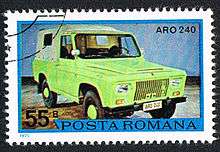ARO that is short for Auto Romania, was produced in Câmpulung, ARO was a
Romanian off-road vehicle. ARO vehicles were produced from 1957 to 2003,
however in Italy Volkswagen powered ARO’s were sold under the brand name AMC.
ARO manufactured over 380,000 vehicles from which 2/3 were exported to 110 plus
countries. This car was produced under the name Portaro in Portugal. Production
started in the year 1957, it was powered by a 50 h.p engine this model was
called the IMS- 57.
The real deal. 5 years of research and development lead to the launch of
the ARO 10 in the year 1980 with the name Dacia 10 in Romania. This car now had
a new body design and had doors along with a water resistant roof. The ARO 10
shared several elements with the Dacia 1300, it even borrowed a 1.3L engine
from the Dacia.
The ARO 10 was a smaller version of the ARO 24. The ARO 24 can be
categorized as a midsize SUV. The last evolution of the ARO 10 was produced in
1999 with the name ARO 10 Super. Another car that was derived from the ARO 10
was the ARO Spartan, this was a two door convertible 4x4 which was manufactured
till 2006 as ARO was closed down. I view the ARO 10 as a car that had similar
intentions as the Maruti Suzuki Gypsy. The 2 vehicles have served military and
civilian use in an economical way, as both have been low on maintenance costs.
The gypsy was however slightly more efficient and ergonomically designed when
compared to the ARO. At the end of the day both have served their purposes and
have a great fan following.


Comments
Post a Comment